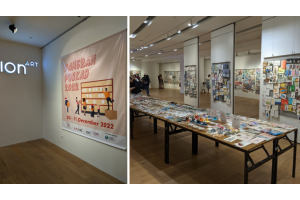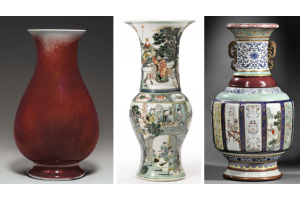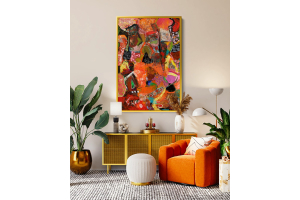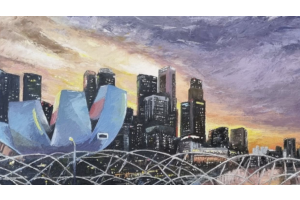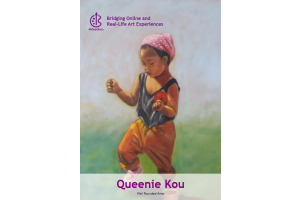Tropical Stories Unveiled: A Cross-Continental Journey through Southeast Asian and Latin American Art
-
June 07, 2024
Artworks

7 June 2024
Written by: Ooi Jian Hui
This week, we feature 'Tropical Stories from Southeast Asia and Latin America' exhibition at the National Gallery Singapore. Situated in the Singtel Special Exhibition Gallery on Level 3 of the City Hall Wing, this immersive exhibition occupies the entire level, featuring three distinct galleries with diverse themes. Spanning the entirety of the 20th century, the showcase boasts over 200 groundbreaking artworks crafted by more than 70 artists.
Adopting a unique and comparative approach to artistic expressions, Tropical Stories sheds light on shared struggles against colonialism that have significantly shaped the histories of Southeast Asia and Latin America. Join us as we explore the highlights from these three captivating galleries, providing a sneak peek into the rich tapestry of stories waiting to be unveiled.
Highlights in Gallery 1: The Myth of The Lazy Native
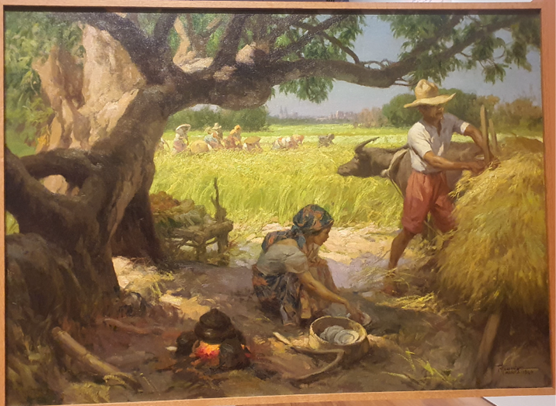
Rice Harvesting by Fernando Cueto Amorsolo
"Rice Harvesting" by Fernando C. Amorsolo swept me away into the heart of the Philippine landscapes, each stroke depicting idyllic scenes with an incredible attention to detail. Amorsolo's mastery of light and color turned this painting into more than just art—it became a portrayal of work as a social activity, blending labor with serene moments of rest.
Despite the widespread acclaim for its visual richness, artists like Victorio C. Edades questioned whether Amorsolo's depictions reinforced colonial stereotypes. This brought forth a thought-provoking debate, forcing me to reconsider the seemingly tranquil rural life and confront the harsh realities faced under colonial rule.
As a 21st-century youth, my initial awe at the artwork's beauty gave way to a deeper understanding. Beyond the surface, "Rice Harvesting" carries a colonial legacy, teaching me not to judge a painting by its picturesque appearance alone. It's a poignant reminder of the country's symbolic fertility, honoring rice as more than sustenance—it's a symbol of unity during challenging times, like the war era.

Semsar Siahaan, Olympia, Identitas Ibu dan Anak (Olympia, Identity with Mother and Child)
As I strolled deeper into the gallery, my attention was captivated by a sprawling painting featuring a naked blonde lady, surrounded by dark-skinned men. A gallery tour guide happened to be nearby, shedding light on the seemingly controversial artwork titled "Olympia, Identitas Ibu dan Anak" by Semsar Siahaan.
The guide delved into the intricate details, revealing a narrative that unfolded beyond the canvas. The blonde lady, she explained, symbolised a prostitute visited by powerful politicians, evident in their opulent costumes and jewellery. However, the contrast outside the adorned room depicted natives facing scarcity.
I found myself grappling with the expressions of the men on the right—were they excited to see a foreigner, or disappointed at her enjoyment amidst their suffering? The guide clarified that, irrespective of the apparent wealth, the red markings on the lady's luggage symbolised the blood and wrongdoings committed to achieve Western power and colonisation.
This painting left an indelible mark, offering a vivid portrayal of the colonisation era's imagery. As I reflected, I couldn't help but feel grateful for being born in the 21st century, where the world is gradually shifting from a focus on colonisation to one centred on development with equality.


A documentary of I Gusti Nyoman Lempad at the end of his life and his cremation ceremony
As I immersed myself in the documentary chronicling the life and cremation ceremony of I Gusti Nyoman Lempad, the sheer magnitude of his artistic prowess as a sculptor and architect in Bali left me in awe. His contributions included the construction of palaces and temples in Ubud, accompanied by hundreds of linear drawings portraying Balinese mythology and folklore. Revered as second only to the Prince of Ubud, Lempad commanded immense respect from the Balinese community.
Throughout his life, Lempad embodied the Balinese artist who relentlessly experimented, advocating for a total art that mirrored the evolving tensions of the changing times.
As the documentary transitioned to the cremation ceremony, I found myself grappling with mixed emotions—respect and awe at the solemnity with which the Balinese approached the ceremony. Witnessing their willingness to burn painstakingly crafted artworks, a labor of love and gratitude, weeks later underscored the profound significance of the ritual. Although Lempad passed away in 1978, his legacy endures in the standing temples of Bali, a testament to his enduring impact on the island's artistic landscape.
Highlights in Gallery 2: This Earth of Mankind
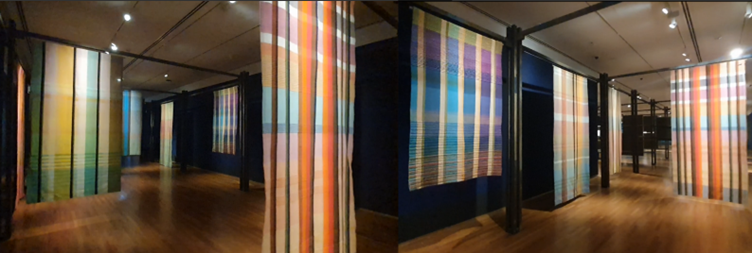
Hand spun, hank dyed and handwoven cotton by Barbara Sansoni
A captivating realm unfolds within Gallery 2 —a tribute to the transformative artistry of Barbara Sansoni. Here, it's not just cloth; it's a testament to craftsmanship. Each piece, hand-spun, hank-dyed, and hand-woven, narrates a story of skill, vision, and cultural resurgence.
In the swinging 1960s, Sansoni elevated the traditional "reddha" beyond mere attire. It became a versatile canvas—wall hanging, bedspread, and even an "art object" fit for museum presentation. At the crossroads of art and design, Sansoni pioneered a revival of the handloom industry, empowering women and preserving centuries-old weaving techniques that resisted the tide of British colonial impositions.
The 1970s marked a fervent period of experimentation for Sansoni. The gallery showcases an array of her "reddhas," each a vibrant tapestry of fabric, color, and intricate handloom grid patterns. Titles echo landscapes etched in Sansoni's youth, capturing the luminous dance of dawn or dusk over water and foliage. Imbued with a deep reverence for Sri Lanka's architecture, Sansoni collaborated with luminaries of tropical modernism like Geoffrey Bawa and Ulrik Plesner.
Highlights in Gallery 3: The Subversive

Ang Retablo Ng Bantaoay by Roberto Feleo
Stepping into the world of "Ang Retablo Ng Bantaoay" is like delving into a captivating historical saga. The vivid portrayal of the Basi Revolt's tumultuous events in 1807, where locals rebelled against the Spanish control of 'basi' (sugarcane) wine, unfolds before me. The centerpiece, resembling an upside-down 'retablo' (altarpiece), commands attention with its symbolic imagery—an inverted friar with a sugarcane face, representing the Church's role, and a bold Christ figure reflecting Filipino defiance against colonial symbols.
As I absorb the details, the marginalized everyday worker and the mythical 'pinteng' come to life, adding layers of depth to the narrative. The play of contrasting colors in the dimly lit gallery creates an air of mystery, intensifying the emotional impact of the artwork. Personally, I'm left in awe, appreciating how the artist skillfully employs diverse mediums to convey a powerful story that resonates with both history and contemporary sentiment.
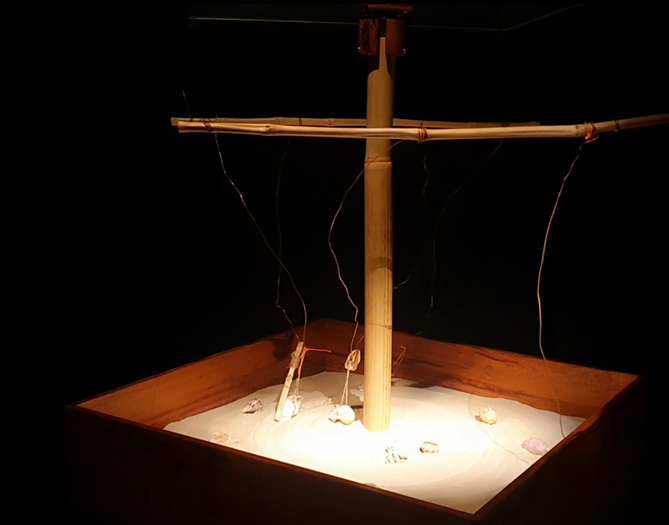
Observing the gentle, rhythmic rotations of the Sand Machine transports me to a serene oasis within the gallery's colonial-era artworks. The simplicity and elegance of the bamboo sticks adorned with shells and ornaments create intricate patterns in the sand, accompanied by the delicate sound of the rotating mechanism.
As the artist shared, this artwork serves as a nostalgic reminder of joyful days spent on the beaches of the Philippine Islands. In my mind's eye, I envision carefree childhood moments—children running along the shore, waves playfully splashing against their feet. It's a beautiful reflection on the innocence and bliss of childhood, encapsulated in the artistry of the Sand Machine.

Fireworks (Archives) by Apichatpong Weerasethakul
Immersed in the dimly lit gallery, the mysterious crackling sounds captured my attention, creating an eerie ambiance. Curiosity led me to the source as I strolled past the statues of Ang Retablo Ng Bantaoay. To my surprise, a captivating video unfolded before me—it was Fireworks (Archives) by acclaimed filmmaker Apichatpong Weerasethakul.
The installation featured an abstract and intensely graphic exploration of the Sala Keoku sculpture park, a significant setting in Weerasethakul's film, Cemetery of Splendor. The video showcased the park's religiously inspired concrete sculptures, where two central characters from Cemetery of Splendor appeared, weaving a spectral dance amid the disorienting flashes of fireworks and flares.
As the spooky glimmering lights illuminated different animals, I found myself mesmerized by the enigmatic scenes playing before me. It wasn't until I delved into the backstory of the artwork that the pieces of the puzzle fell into place. Fireworks (Archives) served as a compelling counterpoint to the melancholic core of Cemetery of Splendor, offering a hallucinatory journey through a landscape where reality and myth intertwine. The artist's portrayal of Sala Keoku as a form of revolt against political oppression added layers of depth, turning the installation into a poignant commemoration of both destruction and liberation.
Conclusion
As I conclude my captivating journey through the Tropical Stories from Southeast Asia and Latin America exhibition, each artwork has left an indelible mark on my artistic sensibilities.
Watch MeetArts virtual tour at YouTube for more insights about the exhibition.
The exhibition runs from 18 November 2023 to 24 March 2024. Admission is free for Singaporeans.


 PREVIOUS ARTICLE
PREVIOUS ARTICLE 

